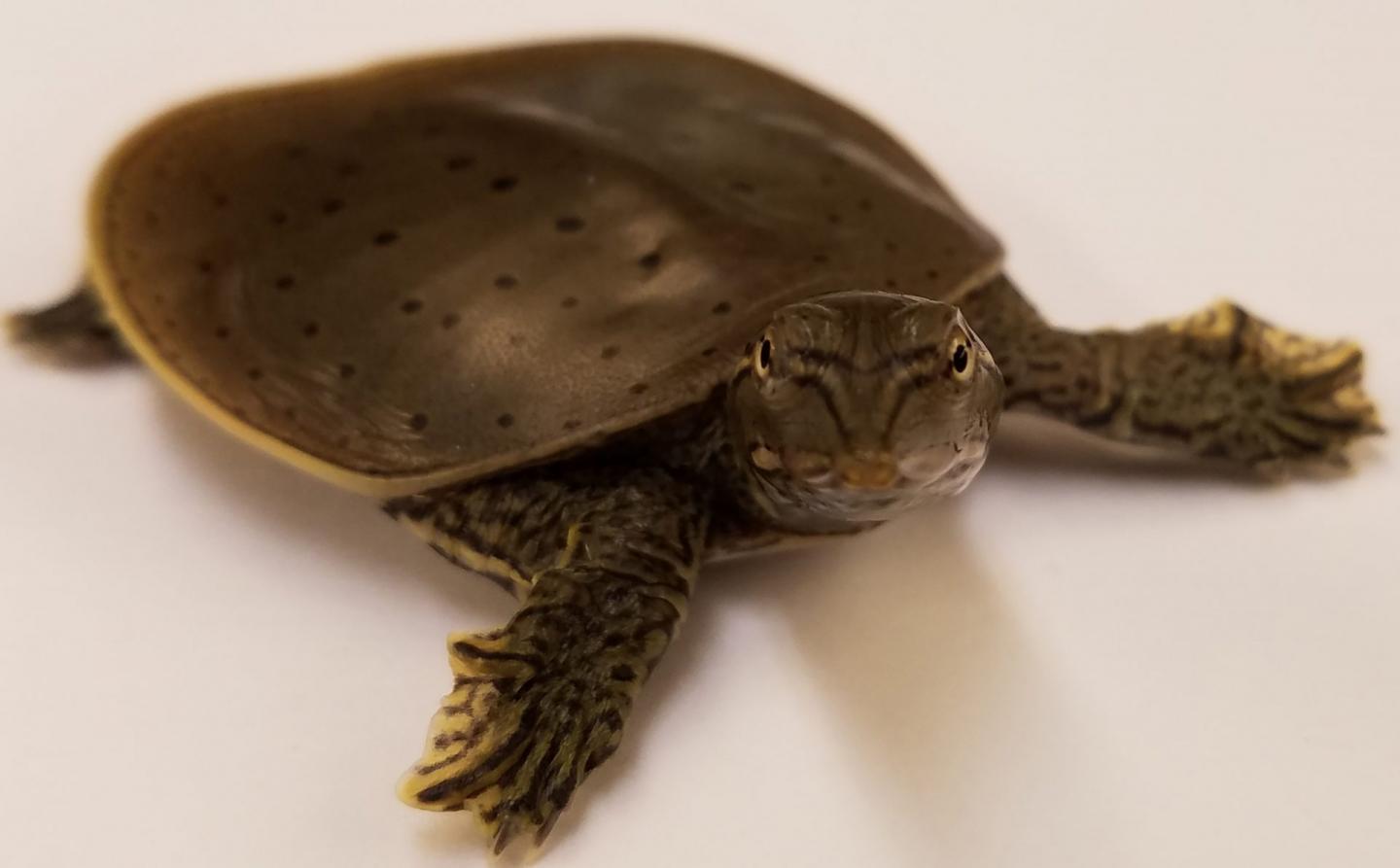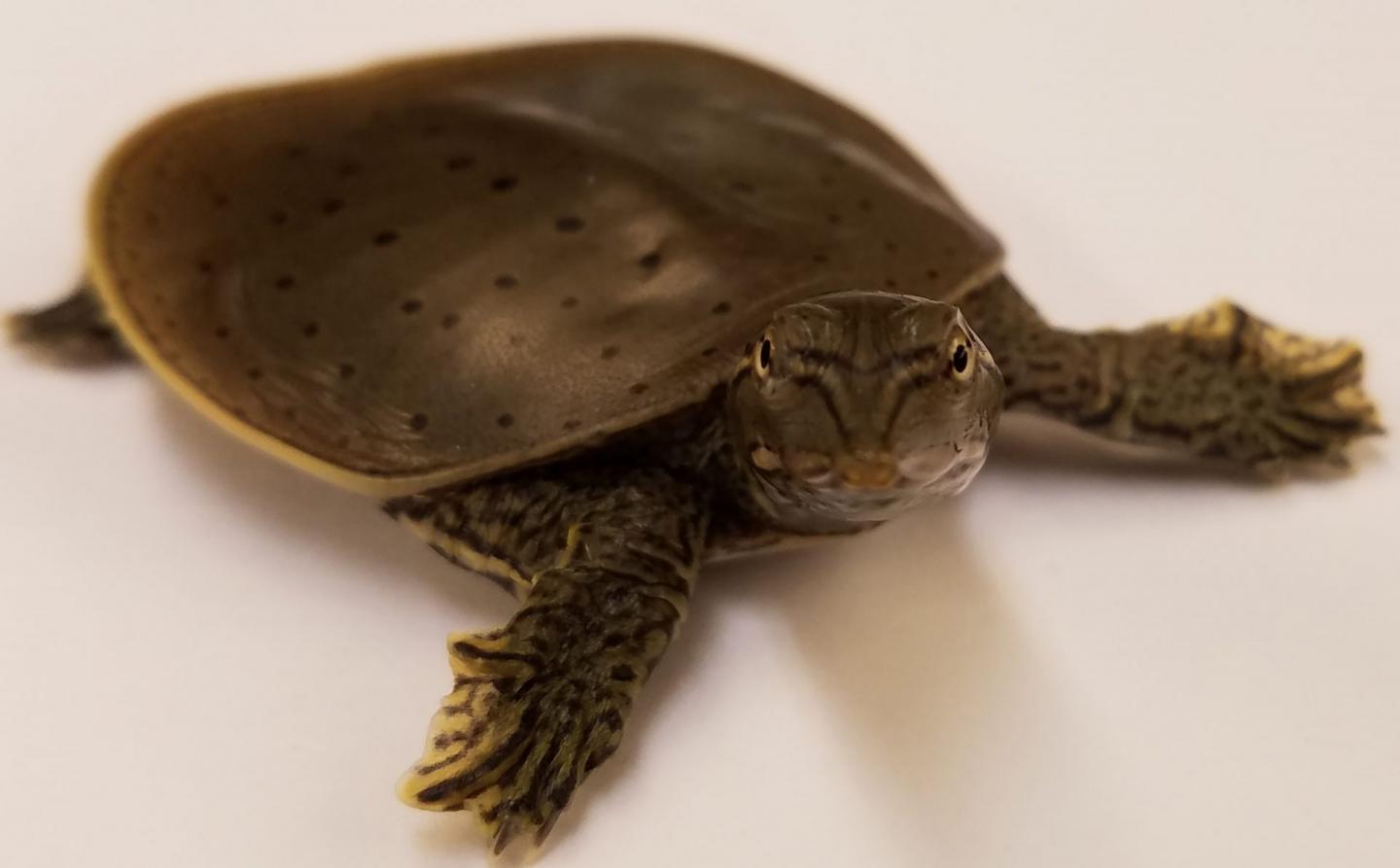
Credit: Nicole Valenzuela
A discovery by scientists at the University of Kent has provided significant insight into the overall genome structure of dinosaurs.
By comparing the genomes of different species, chiefly birds and turtles, the Kent team were able to determine how the overall genome structure (i.e. the chromosomes) of many people's favourite dinosaur species – like Velociraptor or Tyrannosaurus – might have looked through a microscope.
The research was carried out in the laboratory of Professor Darren Griffin, of the University's School of Biosciences, and is now published in the journal Nature Communications. It involved extrapolating the likely genome structure of a shared common ancestor of birds and turtles that lived around 260 million years ago – 20 million years before the dinosaurs first emerged.
Dr Becky O'Connor, senior postdoctoral researcher and co-author of the Nature Communications paper, then traced how chromosomes changed over evolutionary time from a reptile ancestor to the present day.
The team found that, although the individual chromosomes rearranged their genes internally, this did not occur much at all between the chromosomes – what the scientists describe as 'a significant discovery'.
Birds (which are themselves living dinosaurs) have a lot of chromosomes compared to most other species and that is possibly one of the reasons why they are so diverse. This research suggests that the pattern of chromosomes (karyotype) seen in early emerging dinosaurs and later theropods is similar to that of most birds and, again, may help explain their great diversity.
The new discovery suggests that, had scientists had the opportunity to make a chromosome preparation from a theropod dinosaur, it might have looked very similar to that of a modern-day ostrich, duck or chicken.
One of the key pieces of biotechnology that made it possible was the development of a set of fluorescent probes derived from birds that worked well on the chromosomes of turtles.
The genetics laboratory run by Professor Darren Griffin in Kent's School of Biosciences carries out research into how genes organise into chromosomes and how that is different between species. The work is a collaboration with Dr Denis Larkin at the Royal Veterinary College in London, Iowa State University, the University of Cambridge, Oxford Genome Technologies and the Natural History Museum, London. The work is a collaboration with Dr Denis Larkin at the Royal Veterinary College in London, Iowa State University, the University of Cambridge, the Cambridge company Cytocell and the Natural History Museum, London.
###
Reconstruction of genome organization in the diapsid common ancestor permits tracing of chromosome evolution in avian and non-avian dinosaurs is published in Nature Communications doi: 10.1038/s41467-018-04267-9
Authors: Rebecca E. O'Connor1, Michael N. Romanov1, Lucas G. Kiazim1, Paul M. Barrett2, Marta Farré3, Joana Damas3, Malcolm Ferguson-Smith4, Nicole Valenzuela5, Denis M. Larkin3*, Darren K. Griffin1*.
1 School of Biosciences, University of Kent, Canterbury, Kent CT5 7NJ, UK
2 Department of Earth Sciences, Natural History Museum, Cromwell Road, London SW7 5BD, UK
3 Department of Comparative Biomedical Sciences, Royal Veterinary College, University of London, London NW1 0TU, UK
4 Department of Veterinary Medicine, Cambridge University, Cambridge CB3 0ES, UK 5 Department of Ecology, Evolution, and Organismal Biology, Iowa State University, Iowa 50011, USA
Interviews may be organised at the Natural History Museum. For further information or interview requests contact Sandy Fleming at the University of Kent Press Office.
Tel: 01227 823581
Email: [email protected]
News releases can also be found at http://www.kent.ac.uk/news
University of Kent on Twitter: http://twitter.com/UniKent
Notes to Editors
Making chromosome preparations is commonplace in humans to diagnose conditions like Down Syndrome, diseases like cancer, or to establish the reasons for pregnancy loss. It also can be used to examine processes of genome evolution in living and extinct animals.
When doing the same in other animals (e.g. pigs) infertility can be diagnosed or varying patterns between species can be spotted. The Kent team provide a service to the pig breeding industry to do this.
Kent Screening Lab details: For all details of cytogenetic screening services of animals including pigs and cattle contact Dr Rebecca O'Connor R.O'[email protected]
The University of Kent, led by the School of Biosciences will be launching the Institute for Biotechnology and Molecular Medicine (iBaMM). The stated aims of iBaMM are to study normal biological processes, their relevance to health and apply molecular biotechnology to benefit mankind providing a focus for catalyzing new biological discoveries that that take basic research through to application. iBaMM will be a hub of impact-generating activity, developing intellectual property, public and societal engagement and new products and processes of relevance to industry and medical practice.
Established in 1965, the University of Kent – the UK's European university – now has almost 20,000 students across campuses or study centres at Canterbury, Medway, Tonbridge, Brussels, Paris, Athens and Rome.
It has been ranked 22nd in the Guardian University Guide 2018 and 25th in the Complete University Guide 2018, and in June 2017 was awarded a gold rating, the highest, in the UK Government's Teaching Excellence Framework (TEF).
In the Times Higher Education (THE) World University Rankings 2015-16, it is in the top 10% of the world's leading universities for international outlook and 66th in its table of the most international universities in the world. The THE also ranked the University as 20th in its 'Table of Tables' 2016.
Kent is ranked 17th in the UK for research intensity (REF 2014). It has world-leading research in all subjects and 97% of its research is deemed by the REF to be of international quality.
In the National Student Survey 2016, Kent achieved the fourth highest score for overall student satisfaction, out of all publicly funded, multi-faculty universities.
Along with the universities of East Anglia and Essex, Kent is a member of the Eastern Arc Research Consortium.
The University is worth £0.7 billion to the economy of the south east and supports more than 7,800 jobs in the region. Student off-campus spend contributes £293.3m and 2,532 full-time-equivalent jobs to those totals.
The Natural History Museum exists to inspire a love of the natural world and unlock answers to the big issues facing humanity and the planet. It is a world-leading science research centre, and through its unique collection and unrivalled expertise it is tackling issues such as food security, eradicating diseases and managing resource scarcity.
The Natural History Museum is the most visited natural history museum in Europe and the top science attraction in the UK; we welcome more than 4.5 million visitors each year and our website receives over 500,000 unique visitors a month. People come from around the world to enjoy our galleries and events and engage both in person and online with our science and educational activities through innovative programmes and citizen science projects.
Media Contact
Sandy Fleming
[email protected]
44-012-278-23581
@UniKent
http://www.kent.ac.uk
Related Journal Article
http://dx.doi.org/10.1038/s41467-018-04267-9




